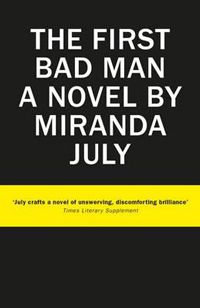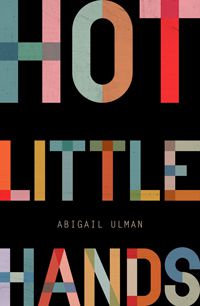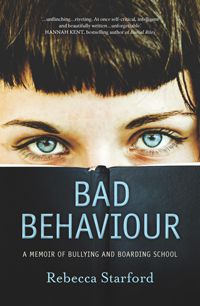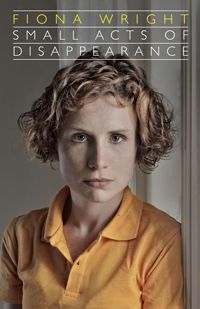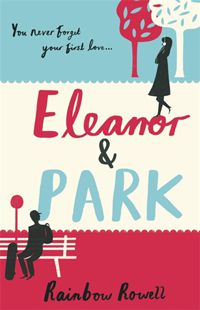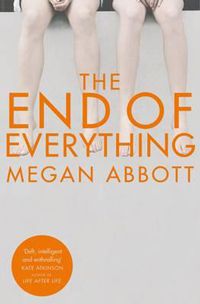This year, for the first time, I kept a record of everything I read. This was largely due to a persuasive argument made by my colleague Nina earlier this year. Looking back, my list isn’t as long as I would’ve liked but when it comes to the books I loved best this year, I’ve noticed a striking theme. Nearly all of them feature women in their teens or twenties that work to challenge the notion of ‘likeability’ – a notion that so many young female characters in both fiction and non-fiction seem to conform with.
Let me introduce you to the weird, ugly, mean, intelligent, hilarious and inspiring young women I read about this year. They’ve definitely stuck with me, and I recommend these books to all female readers in their teens or twenties, plus anyone who would benefit from a stronger understanding of young women, i.e. everyone.
Clee in Miranda July’s novel The First Bad Man
The First Bad Man is a wry and daring novel that made me laugh louder and more frequently than anything else this year. It’s also incredibly moving. I cared deeply for the novel’s middle-aged, mousy narrator Cheryl, but the supporting character – the rebellious 21-year-old Clee – is a fascinating force to be reckoned with. Cheryl works for a women’s self-defence company that promotes feminine self-empowerment, and when the company owners suggest that Cheryl let their daughter, Clee, stay with her for a while she cheerily obliges. Clee is an abusive house guest at first (sulking, whining, throwing punches) but the relationship between her and Cheryl becomes far more nuanced as the story progresses, full of surprising turns.
Claire in Abigail Ulman’s short-story collection Hot Little Hands
Many memorable young women populate the stories in Hot Little Hands. All floating somewhere on the spectrum between childhood and adulthood, they’re growing up in the internet age and grappling with female desire in conflicting ways. While some of the stories in the collection explore aspects of girlhood (‘Head to Toe’ is my personal stand-out, dealing with two late-teen best friends), readers ultimately spend the most time with PhD slacker and self-proclaimed ‘world citizen’ Claire. Three stories in the collection centre around this one character and you get the feeling that Ulman just couldn’t shake Claire’s voice. This is understandable – Claire’s suffering from a major case of arrested development, and I found so many aspects of her life refreshing, entertaining, and embarrassingly relatable.
(For further reading, Tegan Bennett Daylight’s Six Bedrooms is an equally strong Australian short-story collection from this year, and thematically similar to Ulman’s.)
Rebecca Starford in her memoir Bad Behaviour
Starford’s memoir primarily focuses on her experience at a prestigious Melbourne school’s outdoor education campus. She paints an honest and unnerving picture of the power politics within a cohort of fourteen-year-old girls. In the book she raises questions about the realities of female friendship and the nature of bullying that have stayed with me even now, months after first reading it. Starford examines her own affinity for female friends with dominant personalities, and analyses how this inclination has affected her adult relationships. Her account of how it feels to be a victim of bullying is powerful and Starford never indulges in self-pity; Bad Behaviour simultaneously encompasses her memory of in turn bullying other teenagers.
Fiona Wright in her personal essay collection Small Acts of Disappearance
Small Acts of Disappearance explores what it means to live with an eating disorder, but it’s also about so much more. Wright is an award-winning poet, and this background lends a particularly skilful, spare, and affecting use of language to these essays. As Wright chronicles her personal relationship with anorexia, she simultaneously addresses the way her impulse to starve is inexorably linked to her impulse to write. In some essays, Wright also masterfully blends her personal narrative with reflections on themes of hunger and smallness in Australian literature, such as with the character of Rose in Tim Winton’s Cloudstreet. In others, Wright focuses on her time spent living overseas, in Sri Lanka and Germany, and these essays are equally brilliant. Our reviewer wrote that this book is, ‘full of empathy’, and I completely agree.
Eleanor in Rainbow Rowell’s Eleanor & Park
This year I fell hard and fast for two teenagers in 1986 America, thanks to YA superstar Rainbow Rowell, holding my breath as they slowly (so sloowwwly) fell in love. Eleanor is a chubby redhead with clothes that don’t fit right and are held together with safety pins; she can’t explain to her school counsellor that she doesn’t have a toothbrush or a telephone at home. It shocked me how quickly I cared so much for her, which only made me more invested in her romance with Park. The subtle reveal of Eleanor’s difficult home life makes reading this novel all the more addictive, and moving. Eleanor might just be the strongest young woman I’ve encountered in fiction in quite some time, and I only wish that she was around when I was a chubby red-haired teenager.
Lizzie in Megan Abbott’s The End of Everything
When all is said and done, 2015 will be remembered as the year that I discovered Megan Abbott. Once I started The End of Everything I stayed up through the night, physically unable to put the book down. Abbott deals with themes of sexual awakening, female friendship and family relationships, anchored around the case of a missing schoolgirl. She’s incredibly skilled in capturing the muddy desires and longing of adolescence. I found myself mesmerized by the voice of the protagonist, thirteen-year-old Lizzie. As soon as I finished the final page I picked up Abbott’s next novel, Dare Me. Thematically, this reads like a sequel – a noir psychological thriller about suburban teenage girls wrestling with the politics of their friendship circles – and 16-year-old Addy (and her frightening best friend Beth) are exceptionally complex characters, guaranteed to get under your skin.


